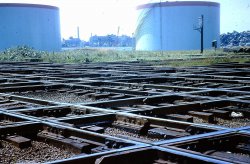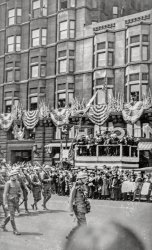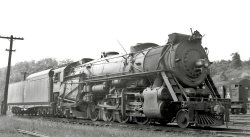
MAY CONTAIN NUTS

Search Shorpy
SHORPY ART

Framed or unframed, desk size to sofa size, printed by us in Arizona and Alabama since 2007. Explore now.
Join and Share
Ad-Free Shorpy
Shorpy is funded by you. Patreon contributors get an ad-free experience.
Learn more.

Recent comments
- Exclusive pump
- Details, Details
- What's that building to the left of the tower?
- Coal Barges
- Bromo-Seltzer
- Inner harbor
- The Basin
- What a headache!
- Giant stepladder?
- Baldwin 62303
- Baldwin VO-1000
- Cold
- No expense spared
- Tough Guys
- Lost in Toyland
- And without gloves
- If I were a blindfolded time traveler
- Smoke Consumer Also Cooks
- Oh that stove!
- Possibly still there?
- What?!?
- $100 Reward
- Freeze Frame
- Texas Flyer wanted
- Just a Year Too Soon
- WWII -- Replacing men with women at the railroad crossing.
- Yes, Icing
- You kids drive me nuts!
- NOT An Easy Job
- I wonder
Member Photos
The Shorpy
Print Emporium
Print Emporium
Search Shorpy
Search results -- 30 results per page
- Crossroads of America: 1963
- ... tends to wear out the rail heads.
Today the various railroads are engaged in a gradual replacement of crossings like this with ... Posted by prrvet - 12/18/2019 - 3:03pm -

- 13th Railway Engineers: 1919
- ... 13th Engineers consisted of personnel from the six largest railroads that ran through Chicago; it operated about 142 kilometers of French ... Posted by Christoph Traugott - 11/12/2018 - 3:32pm -

- CNJ #903
- ... carried them; I have no idea where it came from. Other railroads were known for ordering switch engines and the like with huge tenders ... Posted by Lost World - 10/30/2015 - 7:01pm -

- Night Train: 1962
- ... Pig Service Trailers on flat cars are called "Pigs" by railroads. (Slang for "Piggyback"). The Southern Pacific Railroad was a big ...
The "Pigs" are now some of the hottest trains on railroads. They carry packages for Fedex, UPS, and the Postal Service on time ... Posted by Dave - 08/29/2016 - 7:40pm -
![Night Train: 1962 UPDATE: One source attributes this image to Richard Steinheimer, the "Ansel Adams of railroad photography."
"California freight train at night, February 27, 1962." 8x10 inch Ansco safety negative, photographer unknown. View full size.
JeepsFive 4 axle EMD units we nicknamed jeeps. Looks like double track not sure where maybe Texas?
[Maybe there's a clue in the first word of the caption. - Dave]
O. Winston Link?Sure looks like his work, but I'm not sure he ever shot in other than 4x5. Could this be one of the negatives his second wife Conchita stole?
[One source attributes this image to Richard Steinheimer. - Dave]
Filling your cup with NightrainThis apparently was the SP 5802 GP9 delivered in March of 1959. They were painted grey with what was called the "red bloody nose scheme." If so, it was renumbered in 1965 then emerged renumbered again 1975 as SP 3818. Looks like the four locos are pulling a string of trailers via piggyback service.
SP Piggyback Brochure Linkshttp://www.carrtracks.com/sppg10.htm
http://www.carrtracks.com/sppg01.htm
http://www.carrtracks.com/sppg03.htm
http://www.carrtracks.com/sppg07.htm
Stopped For ServicingHanging near the handrails on the left side of the locomotive is a "Blue Flag" and blue lantern to signify that the train cannot be moved or any car or engine come closer that 150 feet until the person that placed that flag has finished their work and personally removed the flag.
Car inspectors are possibly walking both sides of the train and if one of them needs to get near or under the equipment they HAVE to be assured that nothing will MOVE!
Pigs really can flyThe use of truck trailers on railroad flat cars (TOFC traffic) has a murky history, but as early as 1926 the Chicago North Shore and Milwaukee Railway ran entire trains of what they called “Ferry-cars,” flat cars bearing truck trailers. The Chicago Great Western also offered “pig” service in the 30s. But it was left to a remarkable guy named Ben Heineman (President of the CN&W Railroad 1956 to 1972.) to develop the concept fully. It was often a frightful sight to see these trailers rocking and rolling on a train running at timetable speed, but to my knowledge TOFC trains had an excellent safety record.
SLOPretty sure this is a northbound train at San Luis Obispo.
Golden Pig ServiceTrailers on flat cars are called "Pigs" by railroads. (Slang for "Piggyback"). The Southern Pacific Railroad was a big player back then in the movement of trailers on flat cars.
Their name for the service was called "Golden Pig", and a smiling pig was emblazoned on some trailers advertising the service.
Flash to today, and these trailers are part of a combined movement of goods across the nation which includes mostly containers from overseas.
The "Pigs" are now some of the hottest trains on railroads. They carry packages for Fedex, UPS, and the Postal Service on time sensitive schedules.
1959-60The pic appeared in the July 1960 issue of Trains, credited to Steinheimer. Like the man said, the lead GP9 was built 1959.
Train 373 was the Coast Merchandise West, LA to SF overnight in 12 hours. The "Golden Pig" trailers with the jolly-pig logo appeared in 1981-82.
(Railroads)](https://www.shorpy.com/files/images/SHORPY-1012_0.thumbnail.jpg)























